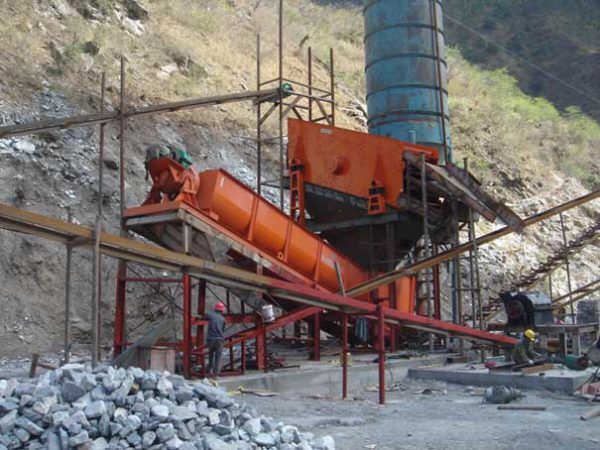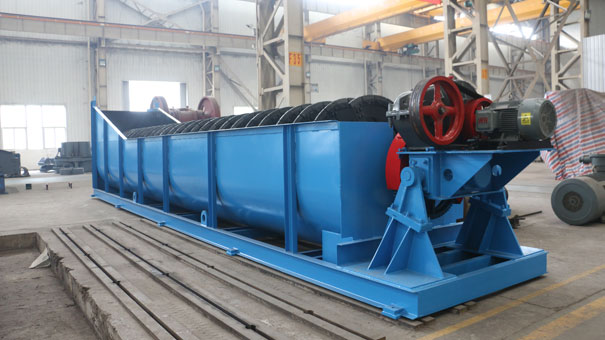When the sand washer equipment is working, the motor drives the impeller to rotate slowly after deceleration through the V-belt, reducer, and gear. The sand and gravel are fed from the silo, enters the vibrating feeder, and then uniformly fed by the feeder and enters by the conveyor belt. The drum screen (vibrating screen) is used for sieving sand and sieving, and then sent to the washing tank of the sand washing machine by the conveyor belt, tumbling under the impeller, and grinding each other to remove impurities covering the surface of the sand and stone, and at the same time destroy the coating, the water vapor layer of sand grains facilitates dehydration; at the same time, water is added to form a strong water flow, which will promptly take away impurities and foreign objects with small specific gravity, and discharge them from the overflow washing tank to complete the cleaning effect. The clean sand and gravel are taken away by the blades, and finally the gravel is poured into the discharge chute from the rotating impeller to complete the cleaning effect of the gravel.

The spiral sand washing machine is semi-cylindrical as a whole. The cleaning tank is very long. The tank is equipped with spiral blades and high-pressure water guns. When working, the material enters the cleaning tank. The high-pressure water gun continuously sprays water. Promote the material to move to the end of the spiral sand washer. This process can achieve a high degree of cleanliness and a large output.
The spiral sand washing machine has a relatively long and narrow body, adopts a horizontal structure, runs smoothly, cleans the sand, and has high output, but its installation and arrangement are not as convenient as the wheel type.
It is recommended that when starting the equipment motor, you should observe whether the equipment is running smoothly and whether the equipment has abnormal vibration. At the same time, you should use tools to test the actual power of the motor to check whether the voltage is normal. After observing the equipment running for a period of time, check whether the bearing temperature of the spiral sand washer has increased. The temperature of the bearing should be around 35 degrees Celsius; check whether all parts have been sealed well to prevent dust from entering.

Before the formal feeding trial operation, the no-load operation should be carried out first, and the load operation test should be carried out on the basis of good no-load operation. The time can be between 2 and 4 hours without load. During this period, observe the whether the connection is loose. If no abnormal problems are found in the load operation test machine for about 5 hours continuously, even if the test machine of the new equipment is completed, the spiral sand washing machine can be officially put into use.

